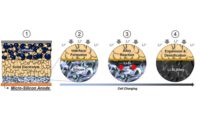Innovation Is Big Winner in Latest College Poll

This time of the year, many football fans pay close attention to the weekly Associated Press (AP) college poll. Recently, one of AP’s big rivals released another kind of ranking that’s also sure to stir debate.
Reuters Top 100: The World’s Most Innovative Universities ranks the educational institutions doing the most to advance science, invent new technologies and help drive the global economy. Factors such as R&D spending, number of patents filed, patents granted, invention disclosures, licensing agreements and startup ventures were compiled to make the list.
More than one-half (54 percent) of the 100 universities are located outside the United States. Of that group, Japan has the most schools (nine) on the list, followed by France (eight), South Korea (eight), Germany (seven) and England (five). But, the U.S. is well-represented, with eight of the top 10 and 17 of the top 25 schools.
According to Reuters, the world’s leading schools for innovation are Stanford University, the Massachusetts Institute of Technology, Harvard University, the University of Texas, the University of Washington, the Korea Advanced Institute of Science and Technology (KAIST), the University of Michigan, the University of Pennsylvania, KU Leuven and Northwestern University.
While only two foreign universities are ranked in the top 10, they both stand out, especially when it comes to robotics research.
Established in 1971 by the Korean government, KAIST was modeled after engineering schools in the United States. And, it was initially funded with a multimillion-dollar loan from the United States Agency for International Development. Most major courses are taught in English, and the unviersity maintains strong ties to the U.S. academic community.
A dual-degree program allows students in select disciplines to simultaneously earn degrees from KAIST and partners such as Carnegie Mellon and Georgia Tech.
Last year, a team from KAIST’s Robotics and Computer Vision Lab won a humanoid robot challenge sponsored by the Defense Advanced Research Projects Agency (DARPA). Its machine finished all eight assignments in less than 45 minutes, beating 24 international teams and claiming a $2 million prize.
The goal of the competition was to develop a robot capable of assisting humans in responding to natural and man-made disasters, such as the Fukushima Daiichi nuclear power plant incident in Japan. Participants had to finish eight assignments in 60 minutes, during which their robots were untethered and operated wirelessly without communication from engineers.
“Each team was assigned a series of tasks that included driving a vehicle, getting out of a vehicle, opening a door, turning a valve, drilling a hole in a wall, a surprise task such as pushing a button or turning on a switch, walking over rubble or debris, and climbing stairs,” says Jun-Ho Oh, a mechanical engineering professor who led the KAIST team.
"Robots scored a point each time they completed their missions," explains Oh. "To win, a team had to complete all the tasks successfully in the shortest amount of time possible."
Originally founded in 1425, KU Leuven is one of the world’s oldest universities. Although the Belgian school is almost 600 years old, it excels in modern technology, such as information and communication systems, microelectronics, nanotechnology and robotics.
KU Leuven engineers recently developed an automated food packaging system that reduces waste and is far more flexible than existing processes. With its three modules, the automated system can even process different food products on the same production line.
A robotic handling module packs fruits, vegetables and other produce in trays. A food quality inspection module then assesses the products before the tray is sealed off. Finally, a packaging module prints the top foil with information about the product. This module can create different packages for different retailers so that food producers no longer need to stock different packaging materials.
“The project focused on vine tomatoes, grapes and ready-to-eat meals,” says Wouter Saeys, a professor in the department of biosystems. “These food products are notoriously difficult in terms of handling and quality assessment.”
Looking for a reprint of this article?
From high-res PDFs to custom plaques, order your copy today!





